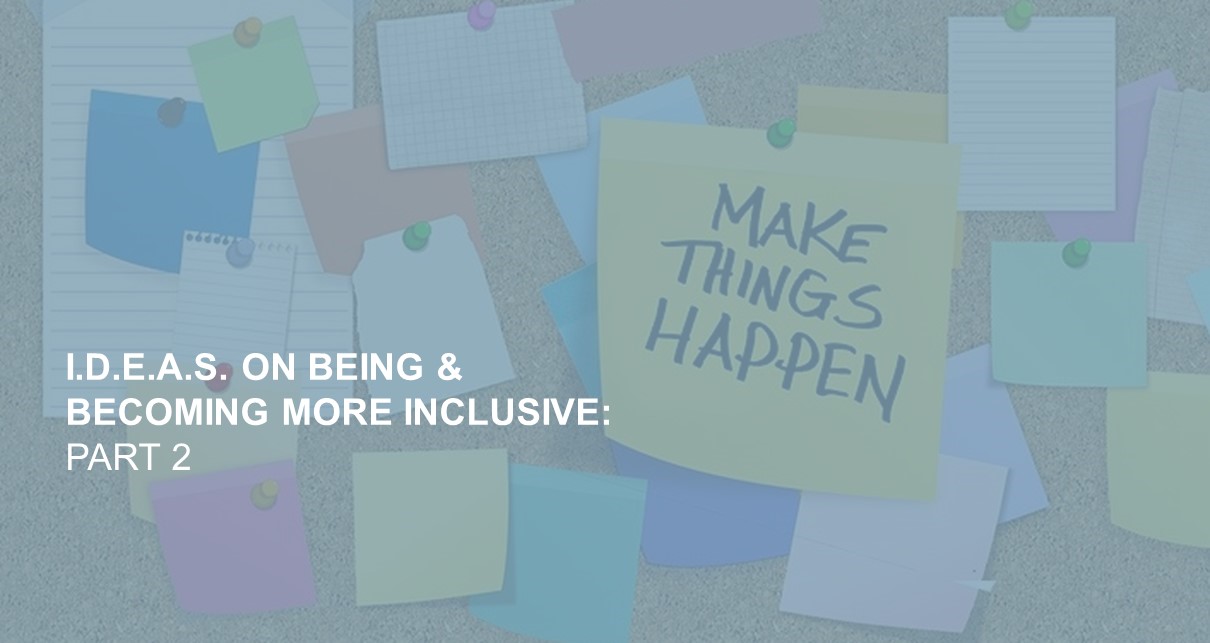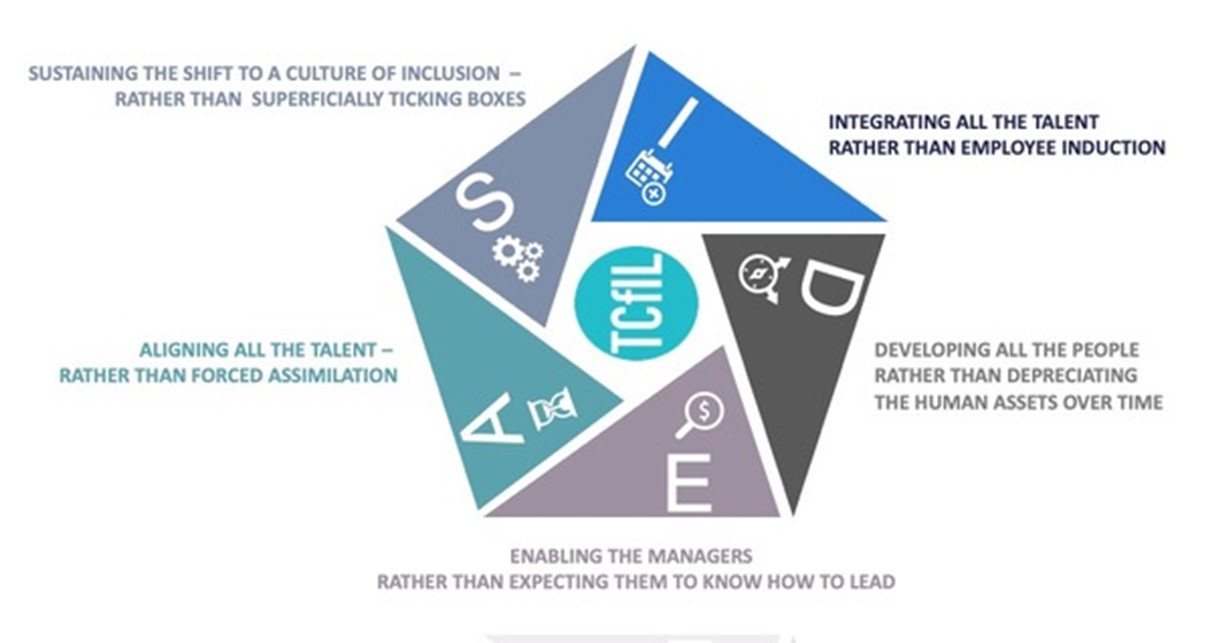

In part one of this blog series we brought you expert insight from Paul Anderson-Walsh, Co-Founder of the Centre for Inclusive Leadership, where he introduced the I.D.E.A.S model on being and becoming more inclusive. This framework enables organisations to better understand where they need to focus their efforts if they are to develop and sustain an inclusive environment in which everyone can be their best self and do their best work.
Part one explained the difference and importance of integrating new hires into an organisation rather than inducting them. This week we turn to the next crucial element the development of your people.


Developing all the people
Attracting the world’s best talent is one thing, retaining it is another. In a previous article I spoke about the democratisation of quality customer treatment. Rather than treating everyone the same or, worse, discriminating against some based on their (perceived) lack of spending power, democratisation means treating everyone equally well; esteeming and honouring their self-worth not their net worth.
In much the same way, when it comes to people development, treating everyone equally well is a key issue. In an inclusive environment there is a commitment to developing all of the people rather than ensuring that we are not discriminating against some of them. The goal is that everyone has the opportunity to be and become their best self and do their best work.
Some call it the diversity cliff, others call it the diversity ceiling but whatever term they give it, the issue they are almost always focussed on is increasing diversity. However, the issue is managing inclusion because it is only when all our people feel included that they are able to be their authentic selves and organisations are able to benefit from their best work.
All of us are unique and complex, so understanding who we are working with, why they are the way they are and why they respond the way they do, is key. If understanding this difference is important at the attraction stage, it becomes critical at the engagement, promotion, and succession planning stages.
It might help us if we pursued the metaphor of talent as an asset. Assets can depreciate over time (some get written down all together) and other assets increase in value. Depreciation is an accountancy term and it refers to a reduction in the value of an asset over time, due in particular to wear and tear (think emotional well-being i.e. being worn out).
When it comes to human capital, managing your people portfolio takes care and whilst each individual asset has its own performance profile, there are some interesting trends that we can point to which suggest what might contribute to a talent asset depreciating in value in an organisation.
There is a saying that claims that people don’t leave their job, they leave their boss. That is a truism. Poor management is one of the main reasons people leave their jobs. However, they also leave because they plateau and find the work boring. Following closely behind is the fact that a lot of people leave their jobs because they either have poor relationships or no relationships with their co-workers. Some feel they’re not being stretched or challenged; they don’t get a chance to use, let alone develop, their skills; they are micro-managed, disempowered, and don’t have any autonomy; they don’t see how what they do, contributes to what the organisation is trying to do and their work is not appreciated.
In an inclusive environment talent assets are more likely to increase over time because their managers coach them and take the time to frame their career journey with them based on three interconnecting needs: Organisational - What competencies has the business identified as critical to its future success: The What and the How; Career - What does each employee need to be have and do in order to be successful in their current role? And Motivational - What is each employee passionate about? What values, interests and goals are most important to him or her?
Top tips for developing talent
1. Make it personal – Be a coach
2. Make it meaningful to them
3. Make sure you empower them by delegating, and giving feedback
4. Make sure you treat them all equally well
5. Make sure they have a sponsor
Is your talent a flight risk?
• In 2018 27% of employees voluntarily left their jobs
• Voluntary turnover costs exceed $600 billion
• Businesses lose productivity with $300 billion annually due to disengaged workers
• By 2023 25% of employees will leave their jobs each year to go and work somewhere else
• As many as 22 out of 100 employees left their jobs for career development
• And 3 in 4 employees who quit their jobs could have been retained by their employers
To find out about our about our NeuroTech® Tool, The TCFIL Retention Assessment, please get in touch. Look out for my next blog where I explain the next element of the I.D.E.A.S. model ‘Enable’.
Share your insights
We’d love to hear from leaders on how you are adapting, implementing and assessing your workforce engagement and inclusion strategies as a result of the Covid-19 crisis. Please get in touch to share your insights.
Similar blogs




